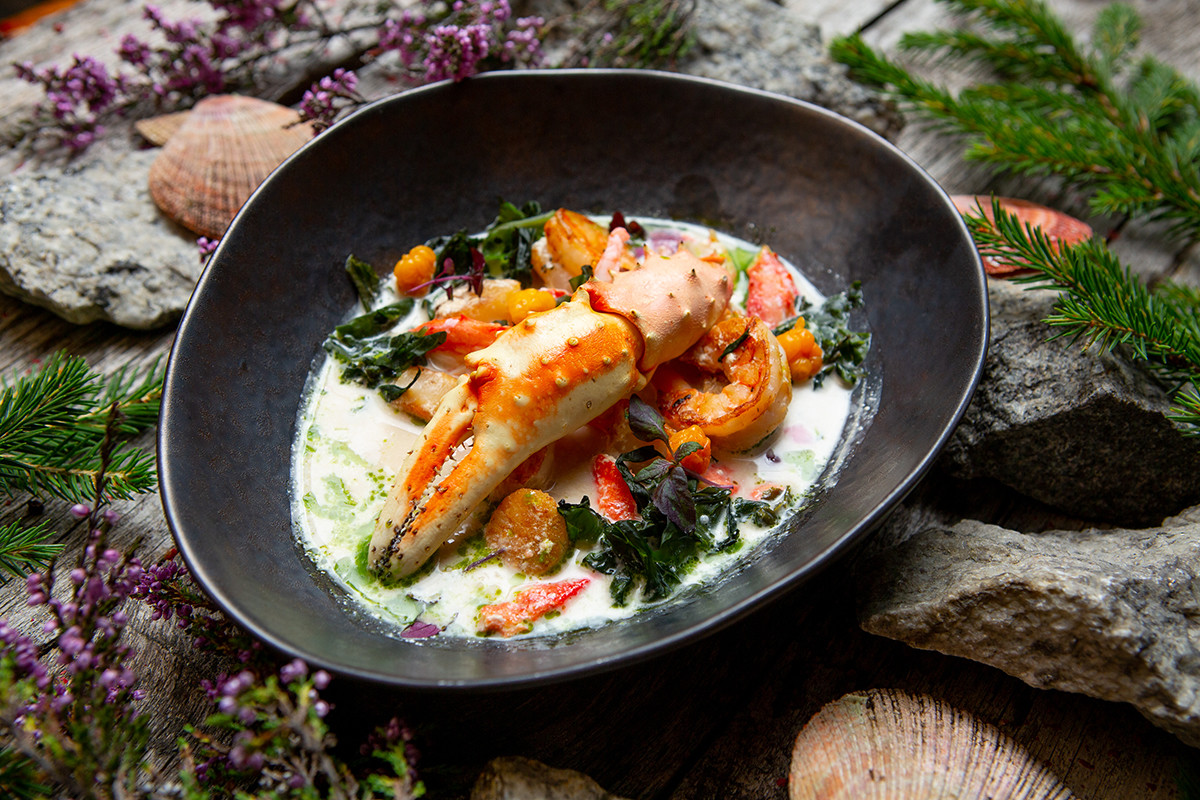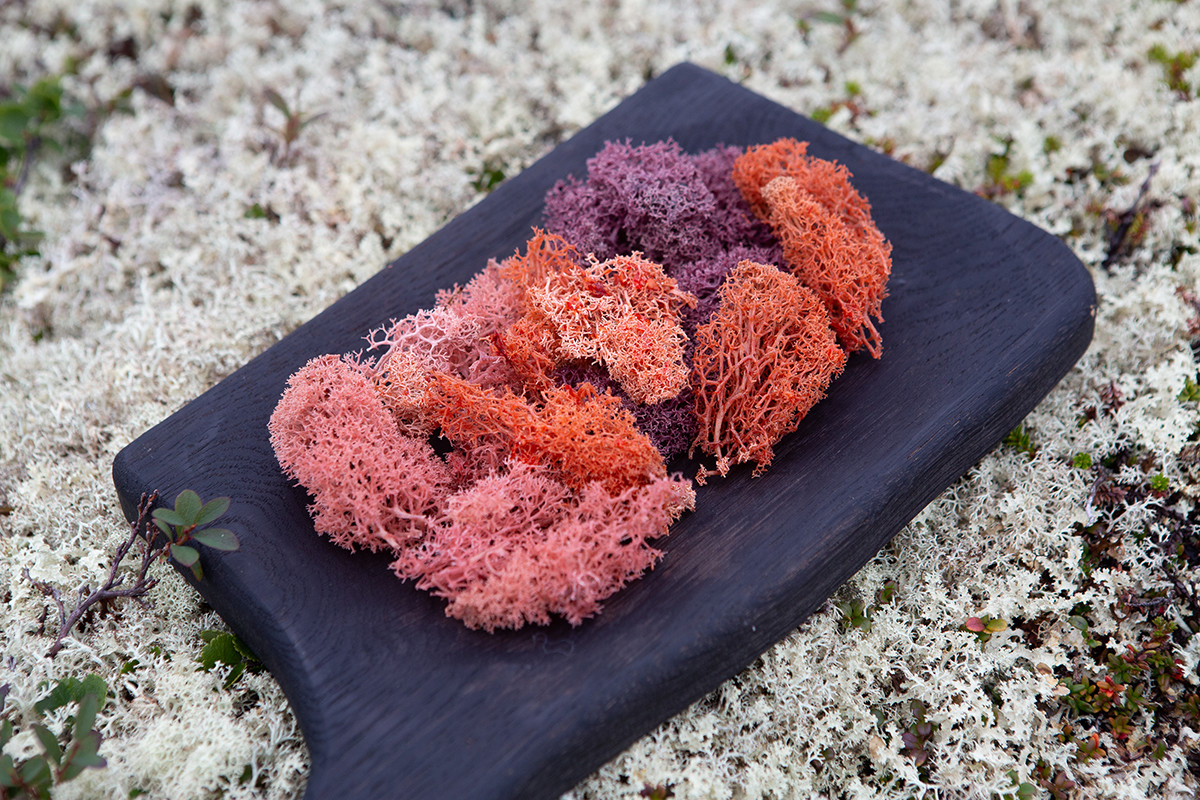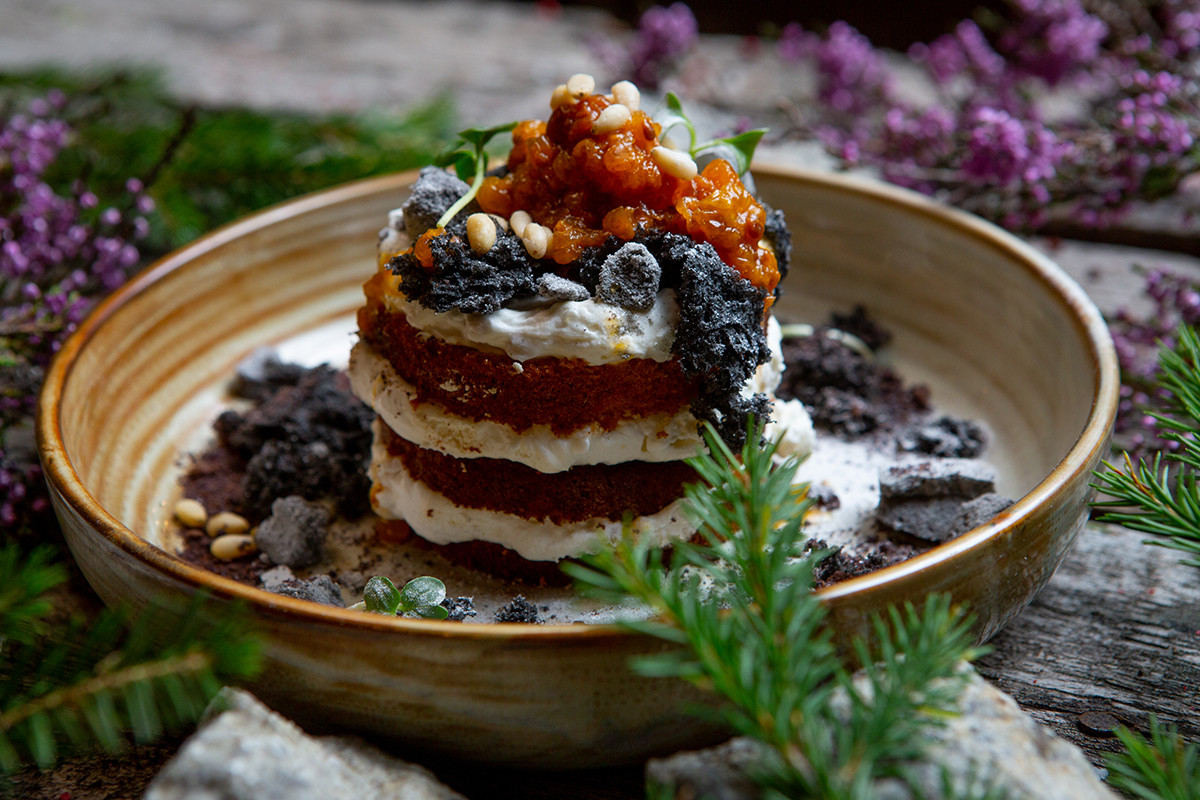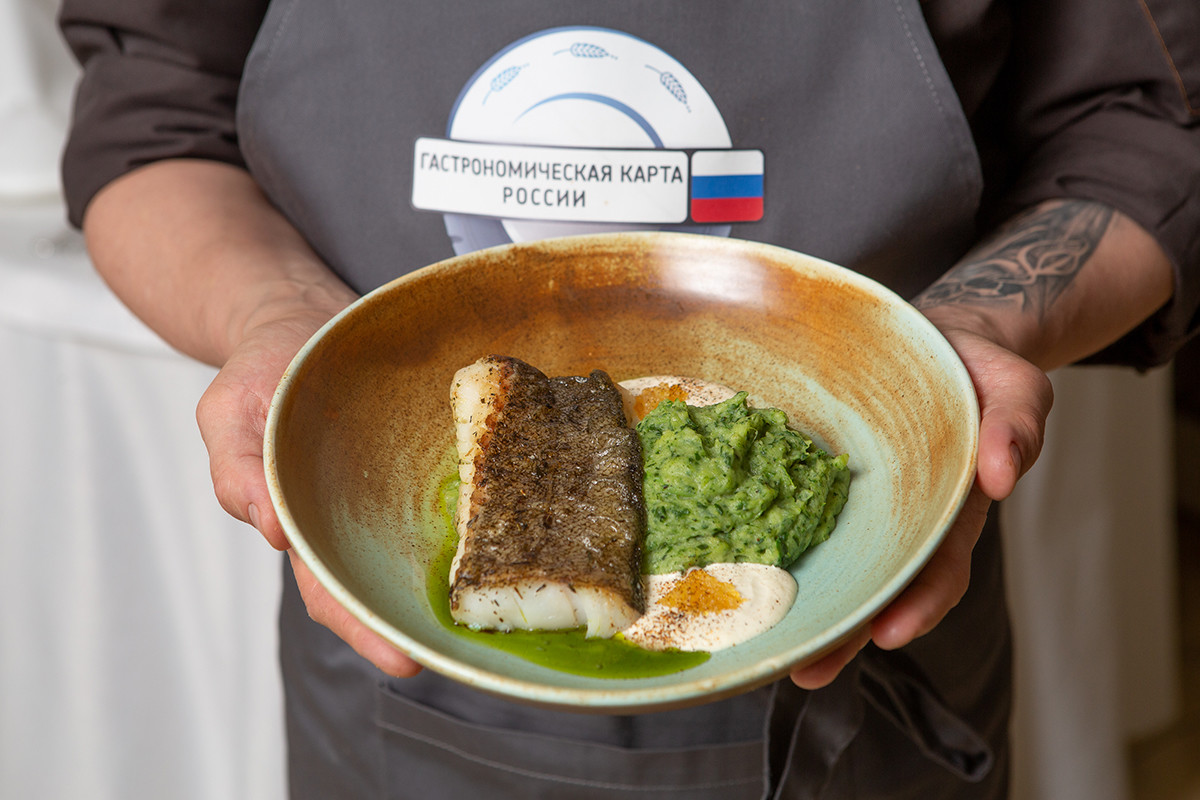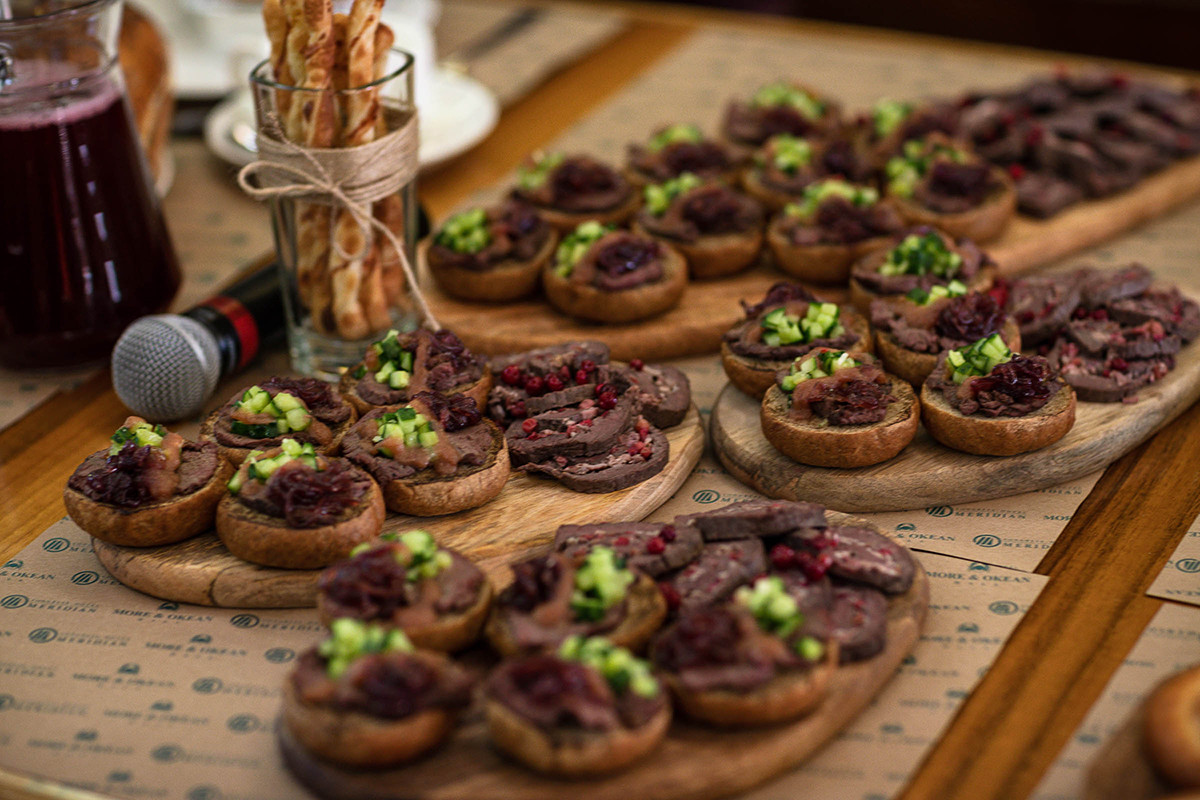7 BEST Russian Arctic cuisine dishes (RECIPES)
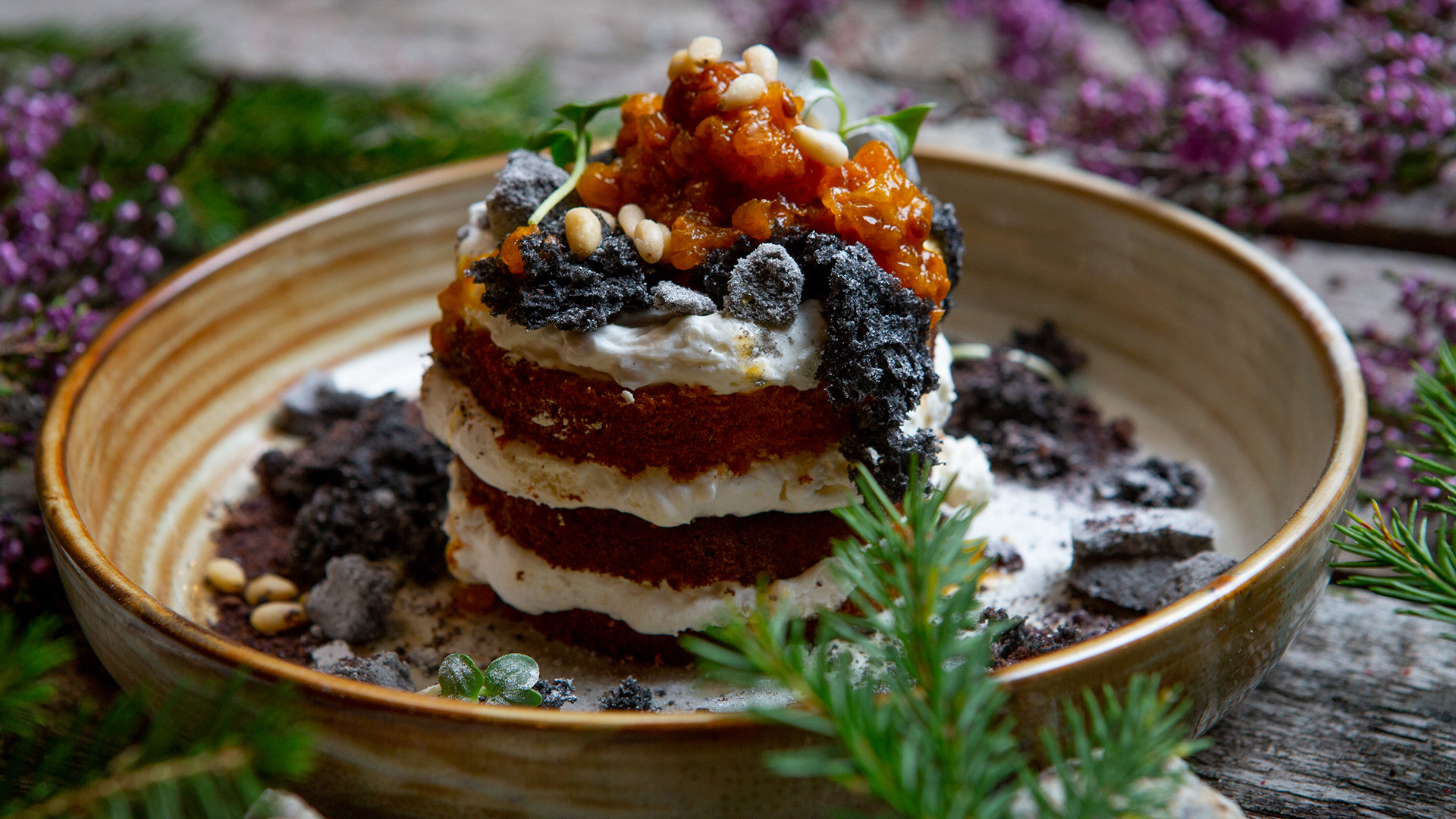
1. Arctic ukha (fish soup) with scallops, prawns, crab and cloudberries
The “fishless” recipe for Arctic ukha fish soup originated from proximity to the Barents Sea, the natural habitat of Far Eastern crabs. At present, there are more than 20 million, so for locals to catch a fresh crab is as easy as pie.
Crab shells are used to make a broth to which kelp, crab meat, prawns, scallops and cloudberries - local berries that look like orange raspberries and taste like blackberries - are added. Svetlana Kozeiko, head chef at the Tsarskaya Okhota restaurant, shares her recipe with us.
Cooking:
To make the broth, take the crab shells and brown them a little in the oven. Then simmer for 2-3 hours to get a concentrated broth. The more shells and the less water you use, the more concentrated the broth will be. You can add oyster plant and thyme to taste.
When the broth is ready, add cream, salt, kelp (40 g) and crab meat (120 g). Brown the scallops (200 g) and prawns (160 g), and also add to the ukha. Garnish with cloudberries (5-7 berries) and drops of dill oil.
2. Arctic ‘chips’ from reindeer lichen
Reindeer lichen is a moss that grows extensively everywhere in northern Russia. It is often to be found in open spaces in the taiga, pine forests, swamps and in the mountains. It is mainly the food of reindeer, but locals often use it, too - it is said to be beneficial for digestion. Furthermore, reindeer lichen has bactericidal properties - people in the North, for example, use reindeer lichen to cover fresh meat to stop it from spoiling at room temperature. The taste of reindeer lichen is slightly bitter and it smells rather like mushrooms. Alexey Ermakov, the chef of the Pirenga tourist center, tells us how to make sweet “chips” from lichen.
Cooking:
- To make the “chips”, take reindeer lichen without its roots, clean it and soak in water for three days for its bitterness to disappear.
- Simmer in a saucepan with local berries - lingonberries, blueberries and cloudberries.
- Add sugar to taste and then dry.
3. Elk Burger
In the north, venison (or reindeer meat) is often used in meat dishes, but some restaurants also serve elk. Alexey Ermakov’s Elk Burger is served in a rye bun with two sauces - lingonberry and mushroom - accompanied by baked Northern potato and a shot of reindeer antler infusion.
Cooking:
- Mince a fillet of elk (200 g), add finely chopped onion (50 g), garlic (20 g) and capers (20 g), as well as mustard (10 g), olive oil (20 ml) and salt and pepper to taste. Shape the mixture into a patty and insert 20 g of Sulguni cheese inside. Fry on both sides in a frying pan with olive oil and butter until golden brown. Add chopped aspen mushrooms (100 g), a sprig of rosemary and 2-3 cloves of crushed garlic. Pour over cream (fat content 22 percent) (200 ml) and simmer for 3-4 minutes. Pour the creamy mushroom sauce into a separate container.
- Bake the potato in the oven and cut into pieces.
- Next, prepare the lingonberry sauce. Put 200 g of berries into a braising pan, add sugar to taste and 4 cloves and simmer in their own juice for 5-6 minutes.
- Put some lettuce leaves, the patty, tomato and red onion slices and several slices of fresh cucumber into the rye bun and add the lingonberry and mushroom sauces. Serve on a board with the baked potato and a shot of the infusion.
4. Cloudberry & Pine-Nut Cake
Arguably the most delicious dessert of the Russian North. This cake provides perfect combinations of cloudberries and pine-nut sponge, crisp meringue and pine nuts, sponge cake and cream. The creator of the recipe is Svetlana Kozeiko. The recipe doesn’t include the cake’s main decorations.
The proportions given are for a sponge cake weighing 1.3 kg, for 20 servings.
Cooking:
- To make the sponge, whip 12 eggs, honey (120 g) and sugar (320 g) for 10 minutes. Then add wheat flour (200 g) and pine-nut flour (160g) and mix. Bake the sponge cake for 15 minutes at a temperature of 190 C.
- Prepare the cream cheese with pine nuts and the cloudberry jam. For the cream cheese, combine and beat in a food mixer some Cremette cheese (80 g), cream (fat content 33 percent) (40 ml), pine nuts (15 g) and powdered sugar (15 g). For the jam, simmer the cloudberries (50 g) with sugar (25 g) for 5 minutes.
- To make the meringue, whip 8 eggs, add sugar (320 g) and beat for about 10 more minutes. Add powdered sugar (320 g) and beat for about 20 minutes until the mixture acquires the consistency of thick sour cream. Spread the meringue on a parchment sheet and dry out in the oven for 2 hours at a temperature of 100 C.
- Now you can assemble the cake. Cut the sponge into three round sections, steep in the jam, smear with the cream and make three layers. On top, decorate with the jam, a chocolate twig, pieces of the meringue, tiny micro herb leaves and pine nuts.Zubatka51 (Catfish51)
5. Zubatka51 (Catfish51)
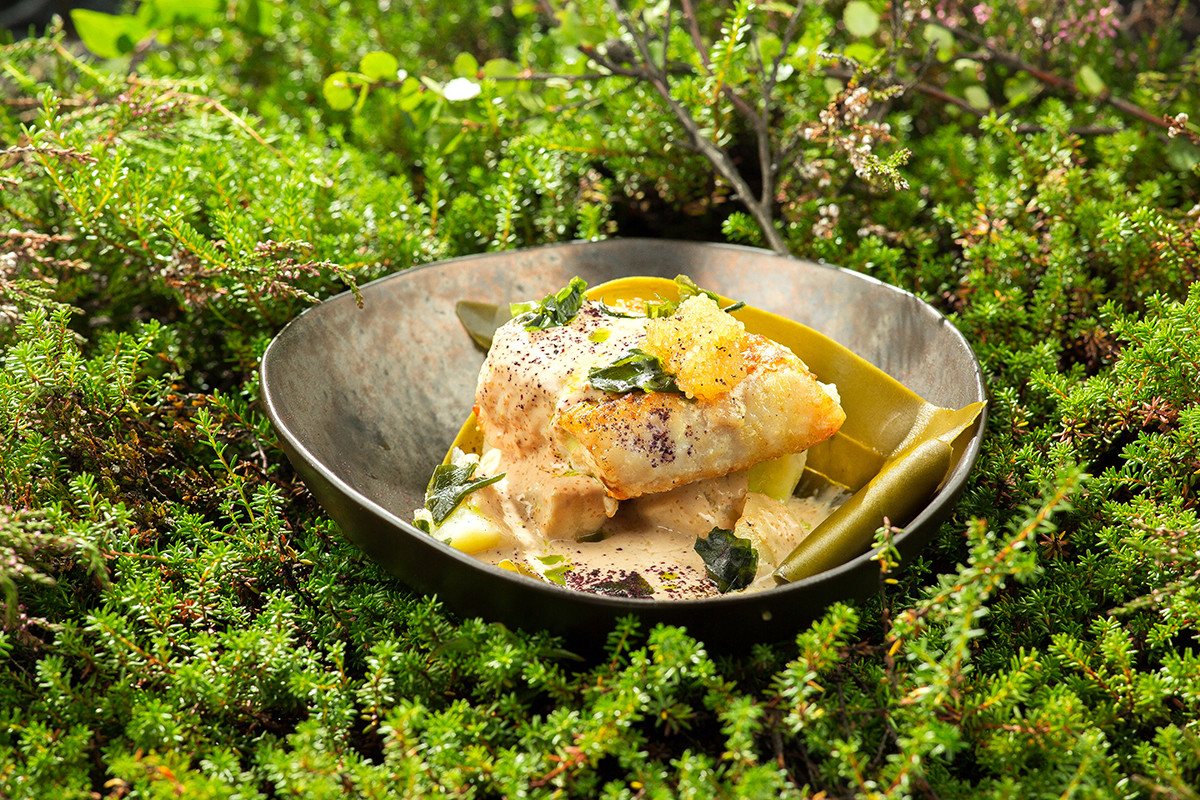
There are just five species of catfish in the world, and the popular name for it is ‘wolffish’, according to the creator of the recipe, Svetlana Kozeiko. The variety caught in the Arctic Ocean and Barents Sea is the spotted catfish. It has a very interesting texture - slightly gelatinous and very succulent. In local restaurants it is regarded as an extremely rare and expensive delicacy.
Cooking:
Brown a fillet of skin-on catfish (220 g) on both sides in a mixture of butter and olive oil and place in a fan oven for 8-10 minutes at 180 C. Then heat 200 ml of oat kissel or any kind of plant milk, add 40 g of onion purée, 50 g of herring roe and 15 ml of oyster sauce and process in a blender. The sauce can be left to reduce slightly. Serve the catfish with sautéed potatoes. Pour the sauce over the fish and top with some pike roe. Pieces of seaweed can be used as garnish.
6. Fillet of Murmansk cod with a smoked cream and pike roe sauce
Murmansk cod is the most readily-obtainable and healthy fish in these parts. It contains no pathogenic microorganisms or toxic elements. Cod has been judged to be the highest-quality fish in Russia and it comes as no surprise that local restaurants want to include it on their menus. Maxim Galetsky, the executive chef of the M-Klub restaurant in Murmansk, serves it accompanied with potato purée with spinach.
Cooking(1 portion):
- Marinade a fillet of cod (180 g) for 20 minutes in a mixture of salt, pepper and spices. Heat a frying pan, pour in 1 teaspoon of vegetable oil and add a knob of butter and a sprig of thyme. When the butter melts, place the cod skin down and fry for 4-5 minutes until browned. Then put the cod skin up on an oven tray and bake in the oven for 4 minutes at 180 C.
- Sauté the spinach (30 g) in butter for 1-2 minutes, add the potato purée (100 g) and heat through for 1-2 minutes mixing carefully.
- Heat the cream (30 g) for 2-3 minutes, add salt, white pepper and the pike roe (10 g) and mix together.
- Put the potato purée with the spinach on a serving plate, lay the baked cod on top and pour the cream sauce around it. Drizzle with dill oil.
7. Juniper-flavored buns with pulled venison and tryasuny (smashed cucumbers)
Venison has long been a traditional dish in the Russian North. Sergei Mitrofanov, head chef at Arctic cuisine workshop "FriendChef", tells us how to make a tasty hors d’oeuvre out of venison for a large group.
Cooking(10 portions):
- Place the boneless venison (300 g), butter (30 g), salt (3 g) and two sprigs of thyme and rosemary into a vacuum bag and fasten it tightly, or use an ordinary bag and close it with a vacuum sealing machine. Place the pouch with the meat at the bottom of a saucepan, cover with water and simmer for 2 hours at a temperature of 60 C. When the meat is ready, allow it to cool and then break it into shreds (pull it).
- Wash the cucumbers (200 g), discard the seeds and chop into small cubes. Chop up a clove of garlic, place the cucumbers and the garlic into any lidded container, add salt to taste, replace the lid and shake well.
- Now we need to make the buns. Pour warm water (150 g) into a bowl and add all the listed ingredients:
- Sugar 15 g
- Salt 5 g
- Honey 15 g
- Dry yeast 5 g
- Vegetable oil 20 g
- Vegetable oil 10 g (for brushing on)
- Premium wheat flour 200 g
- Rye flour 100 g
- Malt 20 g
- Juniper berries 25 g
Knead the dough. After it rises, divide it into 10 pieces (55 g each) and roll each one into a ball. Arrange them on a baking tray, cover with kitchen film and allow to rise a little in a warm place. Bake the buns in a preheated oven for 10 minutes at a temperature of 190 C. When ready, brush the rolls with vegetable oil.
- Cut the rolls horizontally into two. On top of each part put some of the venison on one side and on the other some cucumbers. Garnish with lingonberries.
If using any of Russia Beyond's content, partly or in full, always provide an active hyperlink to the original material.
Subscribe
to our newsletter!
Get the week's best stories straight to your inbox
